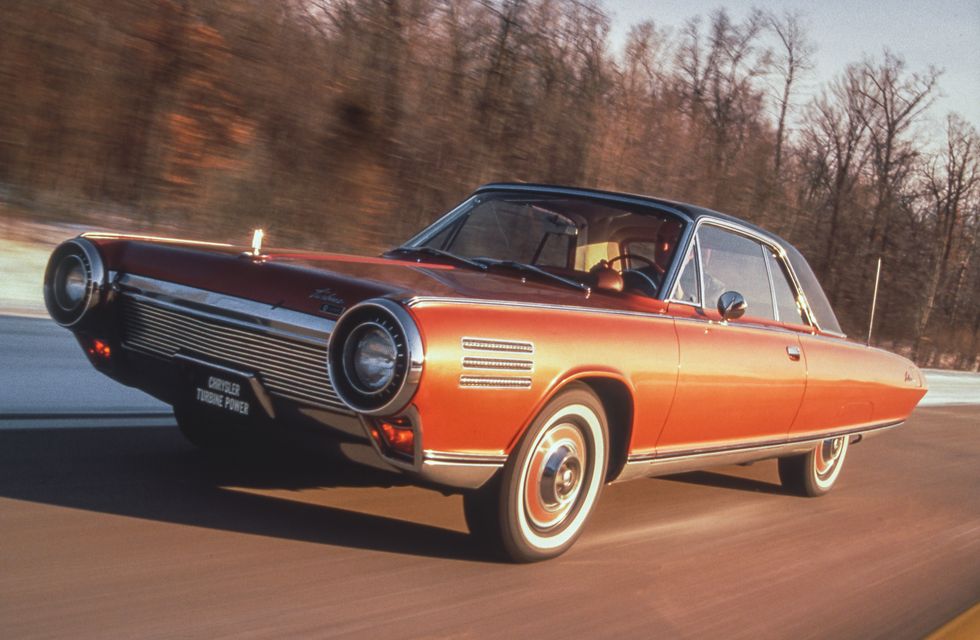The Northern cold snap that led to pictures of frozen and stranded electric vehicles along the roadways has given the automobile industry pause in their love affair with the EV.
With the acknowledgment that EVs are not for everyone, industry attention has turned back to alternative fuels.
While the industry has tinkered with different fuel formulations since the advent of combustion engines, the first real alternative-fuel car was the 1963 Chrysler Turbine Car that had an engine that could literally run on any flammable liquid.
Perfume, tequila, kerosene and even rubbing alcohol could be poured in the tank and the car would fire up immediately. However, the car never made it into production.

The turbine car had its drawbacks; it was loud, got no better fuel economy than a traditional car and the engine was expensive to produce.
In the 1990s and 2000s, people began converting their cars to run on used restaurant cooking oil. Rock stars such as Neil Young immediately jumped on the bandwagon, but the fad fizzled out quickly and the auto industry never once thought seriously about producing a car with exhaust that smells like chicken wings and french fries.
With consumers beginning to turn their noses up to EVs, the auto industry is now looking back to a technology that is over 200 years old.
In 1806, Swiss inventor Francois Isaac de Rivaz developed a four-wheel vehicle that ran on hydrogen and oxygen. Unfortunately, the engine he developed maybe put out the equivalent of a tenth of one horsepower.

According to the National Grid Group, hydrogen is the most abundant chemical in the universe. In fact, hydrogen makes up 75% of the universe’s mass and so it is almost forever renewable.
In the 1990s, researchers at Ballard Power Systems in Canada found a way to increase the power density of hydrogen, bringing the average figure from 200 Watts per liter to around 1,500, according to J.D. Power. This breakthrough made a hydrogen burning engine viable.
There are currently only two companies with nitrogen vehicles in the offing and those vehicles can only be purchased in California: the Toyota Mirai and the Hyundai Nexo SUV. Honda only offered its Clarity for one year before ending production.
The idea behind a hydrogen engine is that it does not actually use normal combustion, but more of a chemical reaction that powers electric engines much like an EV.
Hydrogen cars make no noise and only emit water vapor. Unlike EVs, whose lithium batteries are extremely heavy, hydrogen cars are light which means that there is less wear on the moving parts such as the brakes and tires.
The biggest advantage hydrogen cars have over EVs is that the hydrogen vehicle can be refueled in the space of five minutes, just like a regular car.
For those worried they might end up purchasing Toyota’s version of the Hindenburg airship that exploded famously in 1937, there should be no fear; the application of hydrogen in earthbound cars is completely different from the use of the chemical that ended in tragedy.
The Hindenburg used hydrogen in gas form for lift, modern hydrogen cars use hydrogen fuel cells for power. While liquid hydrogen is still flammable, a modern hydrogen fuel cell car is every bit as safe as any other passenger vehicle with flammable liquid on board, according to Car and Driver.
Some of the drawbacks are that there is no refueling infrastructure outside of California and despite the fact that hydrogen is so abundant, it is still expensive to produce as a fuel and the current cars being offered have a starting price of around $50,000.
The biggest drawback, at least for us motorheads, is the lack of torque. While the technology has come a long way since 1806, hydrogen engines have less top-end torque than a diesel engine, so there is little thrill involved when the pedal is pushed to the floorboard.
See you on the road!
Scott Hudson is the Senior Investigative Reporter and Editorial Page Editor for The Augusta Press. Reach him at scott@theaugustapress.com











